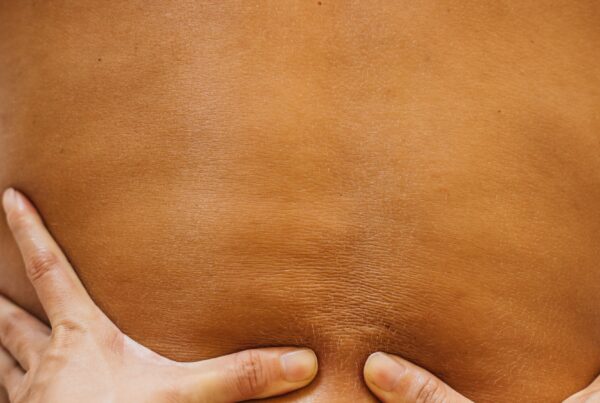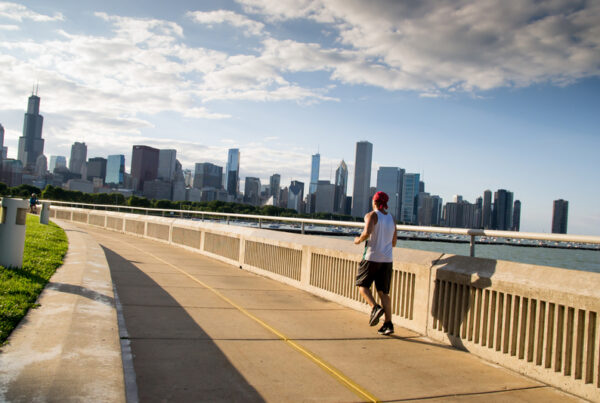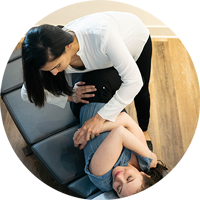Healthy Focus for Fall: Take Advantage of Fall Weather & Keep Moving
The fall season is an exciting time for many. Pumpkin carvings, Halloween parties and the overall shift in weather to jackets, hoodies and scarves can stimulate excitement for those who aren’t in love with the heat of the summer. However, for those who love a good roast at the beach, fall weather can trigger the onset of the winter blues, with grayer skies and the ashy scent of a nighttime bonfire. Staying indoors may look promising to those suffering from the fall blues, but we’re here to help combat both depressed feeling and possible physical pain that comes with long periods of inactivity and shifting weather.
Weather Change and Your Body
A change in weather can also mean a shift in the way your body’s muscles and bones feel—and sound! The Arthritis Foundation reports that a drop in temperature or barometric pressure can definitely correspond to an increase in arthritis pain and pressure inside joints.
Watch the Weather Report
Thunderstorms that come with fall weather also bring about pollutants such as pollen, smoke and mold, which can aggravate allergy suffers. Additionally, the foundation found that 50 to 80 percent of people who suffer from migraines get them more when weather changes. Patricia Prince, M.D. performed a two-year study of migraine sufferers in 2004. She asked them to document their migraine patterns over that time and then she compared them to National Weather Service records. She found, according to the foundation, that about half of the study participants got migraines that coincided with weather changes.
Acupuncture can provide relief and ease fall allergies. Acupuncture may be used to compliment your current allergy fighting routine or can be used alone. It can even help strengthen the body and prevent reactions to allergens in the first place. Unlike antihistamines and decongestants, acupuncture is free of side effects, such as drowsiness and immune system suppression. Learn more about our top-rated acupuncture program in Chicago, here.
Stay Active
Staying active helps to keep your body feeling its best and can also help keep your immune system in check! The Physical Medicine team at Aligned Modern Health can create a functional rehabilitation program tailored to your needs to improve musculoskeletal health and keep you active this season.
Seasonal Blues
Seasonal Depression’s Triggers Seasonal depression can take many forms, but according to Health Guidance for Better Health, there are four main triggers that fall weather has on the depressive state—lack of sunlight, temperature, sleep and rain. Most of us know about Seasonal Affective Disorder, or SAD, where sufferers’ moods are tied directly to the changing of the seasons and exhibit depressive symptoms. Health Guidance says that lack of sunlight could be a major cause, as “light triggers many chemical reactions in our brains that make us more alert and happy.” Sunlight also helps our bodies produce serotonin, a hormone that makes us, for lack of a better word, happy.
If you want to prevent the seasonal blues, stop in for a complimentary consultation with any of our medical providers to learn how we can physically, mentally and emotionally lift you up!
Chiropractic Physical Medicine
Did you know that there is a link between posture and depression? A slouched posture can lead to feelings of depression and a decrease in energy.
Acupuncture
Studies show that Acupuncture is as effective as antidepressants in treating depression and can also help alleviate side effects from antidepressant medications.
Nutrition
Nutritional factors are linked to cognitive, behavioral and emotional health. A poor diet, cravings for sugar and sweet foods, along with nutritional deficiencies are all common in those diagnosed with depression. Whats more, when the sunshine is hiding, our bodies crave Vitamin D. This may have an adverse impact on our mood. Our Functional Medicine and Clinical Nutrition Team can help you pinpoint exactly what your body needs to take on any season.
Your Heart and Heat
Next up is the temperature. Health Guidance reports that in colder weather our heart rates speed up to try and keep us warm. However, this also means that energy directed toward body heat depletes the energy used to keep up our immune systems. Thus, we’re more susceptible to getting sick. And, who is in a good mood when they feel lethargic and ill? Low energy levels due to cold weather are also another reason that if you have chronic pain, it may be worse during this time.
Before flu season strikes, you protect yourself with a healthy lifestyle:
Functional Medicine & Clinical Nutrition can boost immunity by helping you learn to eat a colorful diet! Eating the rainbow (of fruits and vegetables), minimizing processed foods and saturated fats can all help maximize your immune system during cold and flu season.
Acupuncture can also help safeguard against colds and the flu by help lowering stress, improving sleep and regulating blood pressure.
Sleep Sound
Shorter spurts of daylight also means that your body wants to sleep more. Those who work 9-5 may be getting up in the dark and heading home in the dark, which hormonally can lead to depression and lethargy. The same goes for rain. Rain makes us automatically want to stay indoors and socialize less. Health Guidance notes that bad weather also makes for even worse driving conditions, which can trigger anger episodes on top of the other affects you’re already feeling.
Combat Bad Weather Villains
How do we get rid of or lessen the physical and mental torment fall weather can bring? Aside from purchasing a daylight lamp to bask in the temporary glow, keep moving. As tough as it may be to get out of bed, exercise is known to combat stress, anxiety and fatigue. The Anxiety and Depression Association of America (AADA) says that when stress affects the brain, naturally the rest of the body feels it. Exercise and basic physical activity can not only act as natural painkillers but also improves your sleep cycle, which is especially beneficial in fall and winter months. AADA recommends 2 1/2 hours of moderately intense physical activity each week and 1 1 /4 hours of vigorous exercise per week or at least a combo of the two.
Obviously exercising in cold weather has its challenges, which is another reason people may resist it more than in the spring or summer. AADA says to dress in layers, protect your extremities, head into the wind and drink plenty of fluids. Of course, there’s always indoor options such as the gym or a yoga class—anything to get the blood flowing for a healthy mind and body.
To learn more about staying active throughout the season, or to schedule a free consultation on complimentary medicine, visit us.









